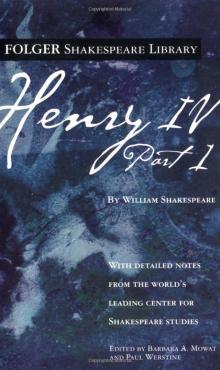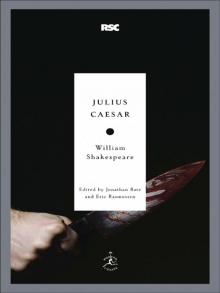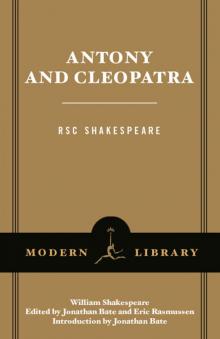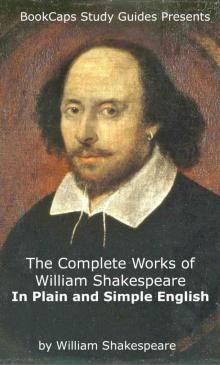- Home
- William Shakespeare
The Arden Shakespeare Complete Works Page 3
The Arden Shakespeare Complete Works Read online
Page 3
SHAKESPEARE IN PRINT
Shakespeare’s literary career in his own lifetime strikingly resists the very notions of artistic autonomy and authority that his name has come triumphantly to represent. He had no specific literary and little direct financial interest in his plays. He wrote scripts to be performed, scripts that once they were turned over to the acting company no longer belonged to him in any legal sense and immediately escaped his artistic control, as staging requirements and actors’ temperaments inevitably enforced their changes upon them. He involved himself with the printing and publication of none of them, and held no copyright. In the absence of anything like modern copyright law, which dates in Britain only from 1709, the scripts belonged to the acting company (and as they remained in the repertory they would be subject to continued revision as the actors sought to keep their property current).
Except that, as an experienced actor and sharer in his company, he could no doubt exert influence over production as an independent playwright could not, Shakespeare’s relation to the plays he wrote was in no way unusual. Like all playwrights, he wrote so that his plays could be acted; his words were intended to be heard, not read. In spite of Ben Jonson’s efforts to establish his own plays as a form of high culture, plays remained sub-literary, the piece-work of an emerging entertainment industry. ‘Riffe-raffe’, Thomas Bodley called them in 1612, and ordered his librarian not to collect such ‘idle books’ in order to protect his Oxford library against the ‘scandal’ that would be caused by their presence.
A play was generally written on demand for an acting company, and the completed script then belonged to the company that had commissioned it. Under certain circumstances, and with no necessary regard for the author’s wishes or interests, the companies would sell their rights in a play to a publisher, who would have it printed in an edition of about 800 copies, usually in a quarto format and selling for sixpence. The author would receive no money from the sale of the manuscript or from any subsequent sale of books. Neither were the literary ambitions of the playwrights usually a factor in publication. Ben Jonson’s aggressive effort to create himself as a literary figure is, of course, the exception that proves the rule, his 1616 Folio’s characteristic ‘The Author, B.I.’ on the individual title-pages revealingly anomalous; indeed Jonson is the only playwright in the period ever identified as an ‘author’ on a title-page.
Image removed — rights not available
8 Title-page of the First Quarto of Love’s Labour’s Lost, 1598
Shakespeare displayed no similarly proprietary artistic impulses. At the time of his death, eighteen plays had reached print (many in more than one edition), but he had prepared none of the texts for publication and had overseen none through the press. The eighteen play-texts each appeared in a hastily-printed quarto volume; none has a dedication or an epistle from the author; none displays any sign of Shakespeare’s interest or involvement in its printing. On the other hand, his two long poems, Venus and Adonis (1593) and The Rape of Lucrece (1594), printed by fellow-Stratfordian Richard Field, are obviously produced with care, and each is issued with a signed dedication to the Earl of Southampton. The texts of the plays show nothing comparable.
In the course of Shakespeare’s lifetime twenty different publishers brought forth editions of individual plays, but not one took any unusual care to ensure that the text was authoritative or the printing exact. The texts are of varied quality and provenance, some seemingly printed from manuscripts that appear authorial, others apparently from copy showing the inevitable cuts and interpolations of the theatre, still others printed from transcripts, as fellow-playwright Thomas Heywood claims, ‘Corrupt and mangled (coppied by the eare)’, reported texts reconstructing performances witnessed or acted. In any case no manuscript of a Shakespeare play survives (unless it be the so-called ‘Hand D’ in the manuscript of The Booke of Sir Thomas More which, if indeed Shakespeare’s own, bears witness to Shakespeare as collaborator, merely one of five playwrights who collaborated in writing the play).
Image removed — rights not available
9 Title-page of the First Quarto of King Lear, 1608
Though today Shakespeare’s literary pre-eminence has made the publication of his plays a thriving cultural industry, his earliest publishers did not seem much to care about his authorship. The 1594 edition of Titus Andronicus omits Shakespeare’s name from the title-page, giving information rather about the printer and where the play could be bought. The play is advertised – and title-pages were explicitly forms of advertising, hung up as posters on bookstalls – not as by William Shakespeare but by the acting company that performed it: ‘As it was Plaide by the Right Honourable the Earle of Darbie, Earle of Pembrooke, and Earle of Sussex their seruants.’ And when it was reprinted, first in 1600 and then in 1611, neither bibliographic scruple nor thought of commercial advantage led the publisher to add Shakespeare’s name to the title-page.
Indeed, until 1598 none of Shakespeare’s plays that appeared in print identifies Shakespeare as its author. Not merely Titus or the early Quartos of King Henry VI, Parts 1 and 2 which could be thought immature efforts of a young playwright whose achievement did not yet merit nor permit a publisher to capitalize on his name on the title-page, but even his later and more successful plays refuse to acknowledge or exploit Shakespeare’s authorship. Romeo and Juliet appeared in 1597, identified only ‘As it hath been often (with great applause) plaid publiquely, by the right Honourable L. of Hunsdon his seruants’; and its next two printings, in 1599 and 1609, while claiming that the text has now been ‘Newly corrected, augmented, and amended’, still make no mention of its author (or corrector), again only identifying the acting company that performed it as the source of its authority. Richard II and King Henry IV, Part 1 similarly first appear with no mention of Shakespeare on the title-page, or anywhere else for that matter.
In fact seven plays appeared before one was issued with Shakespeare’s name. In 1598 Cuthbert Burby published Love’s Labour’s Lost with the title-page identifying the play in small type as ‘Newly corrected and augmented by W. Shakespere’. Whatever this assertion is, it is certainly no ardent proclamation of Shakespeare’s authorship. The unequivocal evidence of the early Quartos is, then, that Shakespeare had no interest in their publication and what is perhaps more surprising, that his publishers had as little interest in him.
At least the latter would soon change. The 1608 ‘Pide Bull’ Quarto (so called after the name of the shop where it was sold) of King Lear does indeed proudly assert Shakespeare’s authorship, emblazoning his name across the title-page in a typeface substantially larger than any other. But the text, it must be said, shows no sign of Shakespeare’s involvement in its publication. It is poorly printed. (It was the first play that its printer had attempted, and noticeably so.) An author overseeing the printing would have insisted on changes, but nonetheless the publisher, Nathaniel Butter, spectacularly identifies the printed play as Shakespeare’s.
What has happened is not that Shakespeare’s rights as an author had suddenly been recognized and were here being celebrated but that Shakespeare’s name was now of value to the publisher. For Butter, identifying his King Lear as ‘M. William Shak-speare: / HIS/ True Chronicle Historie of the life and / death of King LEAR’ served to differentiate his property from another play about King Lear (The True Chronicle Historie of King Leir) that had been published in 1605 and was available in the bookstalls. Shakespeare’s name functioned on the title-page at least as much to identify the play book as the play wright, though already it was becoming evident that Shakespeare’s name could sell books. As the publisher of Othello in 1622 later asserted: ‘the Authors name is sufficient to vent his worke’.
But in truth it is only in 1623 with the publication of the First Folio edition of his plays that Shakespeare truly enters English literature as an author, though this, of course, was neither his own idea nor of any direct benefit to him. He had died in 1616, seven years before the Folio appeared,
and to the end showed no sign of any literary ambition for his plays. But the Folio assumes that Shakespeare is indeed an author to be read and not merely the provider of scripts to be acted. The play-texts in the Folio are stripped of their theatrical association. Unlike the early Quartos, there is no mention in the Folio that any text is ‘as it was played’, indeed, though ‘The Names of the Principall Actors in all these Playes’ are listed, Shakespeare’s own at the head of them, no acting company is ever mentioned by name; rather the texts are described, no doubt too confidently, as perfect and purely authorial, presented here exactly ‘as he conceiued them’.
It is not clear whose idea the collected volume was or even what was the precise motivation for it (beyond a general hope of making some money). The volume’s two principal publishers, Edward Blount and Isaac Jaggard, apparently negotiated with two of Shakespeare’s old friends and fellow-actors, John Heminges and Henry Condell, for the rights to the plays that had not yet been printed, and they then worked to secure the publishing rights to those that had. Eventually they acquired them all (except for Pericles, which had been published in a Quarto in 1609 as the work of Shakespeare, and The Two Noble Kinsmen, not published until 1634 but identified then as the work of Shakespeare and John Fletcher), and the Folio was published in 1623. It includes thirty-six plays, eighteen of which had never before appeared in print, a dedication and an epistle, prefatory verses, and an engraved title-page with a three-quarter-page portrait of Shakespeare and a facing poem.
Printing had begun early in 1622 and took about twenty-one months to complete. The volume sold for £1 with a plain calf binding, for somewhat less when more cheaply bound; and unbound, as many books were sold, it could be bought for 15s. Its very appearance in folio, a format usually reserved for theological or historical works or for collected editions of canonical authors, itself marks a major shift in the cultural positioning of Shakespeare, a shift confirmed within a few months of publication when Thomas Bodley, who, as we have seen, in 1612 forbade the collection of play-texts, accepted a copy for his library and had it bound in fine leather and stamped with the Oxford University seal.
Image removed — rights not available
10 The catalogue of 35 of Shakespeare’s plays as listed in the First Folio, 1623:Troilus and Cressida is not listed
Today it seems obvious that the Folio published by Blount and Jaggard was a necessary and appropriate memorial to England’s greatest playwright, but at the time all that was clear to the publishers was that they had undertaken a complex and expensive project with no guarantee of recovering their considerable investment. In the event, of course, they did. The book sold well, and a second edition appeared only nine years later, remarkable evidence of its popularity. For later generations, with no financial stake, the book is of even greater value. Without the Folio the eighteen plays that first appeared in it might well have been lost; and without the Folio, Shakespeare might never have emerged as the singular figure of English literature he has become, for it is that book that first established Shakespeare as the author he never aspired to be.
The second Epistle to the First Folio
By the autumn of 1623 John Heminges and Henry Condell were the senior surviving members of the King’s Men. In April 1616 they and their colleague, Richard Burbage, who died in 1619, had been left small bequests in the will of William Shakespeare to buy memorial rings. The publication of the First Folio was a different kind of memorial to ‘so worthy a friend and fellow … as … our Shakespeare’, as the dead dramatist is described in the first of two epistles prefaced to the volume and signed with the names of Heminges and Condell. That epistle dedicates the book to William Herbert, Earl of Pembroke and Lord Chamberlain, and his brother Philip, Earl of Montgomery, and calls on them to act as guardians to Shakespeare’s orphaned plays. The second epistle (reproduced here in facsimile) urges ‘the great variety of readers’ to buy ‘these plays’, which ‘have had their trial already, and stood out all appeals’ in the theatre.
Image removed — rights not available
11 The second epistle ‘To the great variety of readers’, prefacing the First Folio, 1623, and signed by John Heminges and Henry Condell
The second paragraph makes several claims which have important implications for actors, readers and editors of Shakespeare. Heminges and Condell claim to have done the best they could, in the absence of their dead friend, to collect and verify the texts of his plays for publication. Three of their claims have been the source of dispute and controversy, and need some qualification. The mention of adding ‘all the rest’ to the plays already in print leads readers to expect the Folio to contain the complete plays of Shakespeare. It does not. Not only are two collaborative late plays, Pericles and The Two Noble Kinsmen, omitted, but the volume initially went on sale without Troilus and Cressida (as its absence from the ‘catalogue’, or table of contents, testifies). Troilus was soon added to the volume – though not to the catalogue: its late arrival is best explained as the result of difficulties experienced by Isaac Jaggard and Edward Blount, the principal publishers, in obtaining permission to reprint it from the copyright holder, Henry Walley. Exclusion from the Folio is accordingly not conclusive evidence that a play may not have had Shakespeare’s hand in it.
More teasing is the warning to readers against previous editions of the plays (half of which were already in print in quarto). What Heminges and Condell meant by ‘diverse stolen and surreptitious copies, maimed and deformed by the frauds and stealths of injurious imposters that exposed them’ has been much debated. They were clearly aware that some earlier quarto editions of plays by Shakespeare differed radically from the texts they were printing. Among those, a handful are conspicuous by the extent to which they differ from the texts printed in the Folio in length, wording, names and natures of characters, and even scenic sequence or particulars of action. They are The Taming of a Shrew (1594), The First Part of the Contention (i.e. King Henry VI, Part 2) (1594), The True Tragedy of Richard, Duke of York (i.e. King Henry VI, Part 3) (1595), Romeo and Juliet (1597), King Henry V (1600), Sir John Falstaff (i.e. The Merry Wives of Windsor) (1602) and Hamlet (1603). Modern scholarship (unhappily) has dubbed these the ‘bad’ Quartos. They do seem, however, to merit the description ‘maimed and deformed’, at least in relation to their Folio counterparts (or to later ‘good’ Quartos in the cases of Romeo and Hamlet).
Variation in a further group of Quartos is less radical, though often pervasive. These are King Richard III (1597), King Henry IV, Part 2 (1600), Hamlet (1604/5), King Lear (1608), Troilus and Cressida (1609) and Othello (1622). Where the seven ‘bad’ Quartos seem to demand exceptional circumstances of textual transmission, such as someone’s attempt to reconstruct them from memory, to account for their very approximate resemblance to the equivalent ‘good’ texts, the other six may be adequately accounted for as products of various usual processes of stage abridgement or adaptation, or of authorial revision, to which they may have been subjected.
What is clear is that Heminges and Condell cannot have intended a blanket condemnation of all earlier published versions, but that their focus must have been on the ‘bad’ texts and, to a lesser degree, on those plays which they could offer in texts reflecting a later stage in their evolution than that represented by the Quartos. They had no qualms about simply reprinting Quartos they found reliable, like The Merchant of Venice or Much Ado About Nothing, with the minimum of editorial intervention.
The myth of Shakespeare’s fluency in composition originates in the Folio Epistle. Where Heminges and Condell saw that fluency as a virtue, others, and especially Ben Jonson, demurred. Jonson was later to respond to the claim that Shakespeare rarely ‘blotted’ a line – that is, deleted and revised it – with the wish that he ‘had blotted a thousand’. In his own contribution to the preliminary matter of the Folio, his verses ‘To the memory of my beloved, the Author, Mr. William Shakespeare: and what he hath left us’, Jonson took pains to offer an alternative view of Shak
espeare as a conscious and painstaking poetic craftsman, ready to:
strike the second heat
Upon the Muses’ anvil: turn the same,
(And himself with it) that he thinks to frame;
Or for the laurel, he may gain a scorn;
For a good Poet’s made, as well as born:
And such wert thou.
Although nearly half of his plays had been printed in his lifetime, Shakespeare only became an author to be read as well as a dramatist to be performed seven years after his death, with the publication of his histories, comedies and tragedies in the First Folio of 1623. During the eighteen-year period between the closure of the theatres in 1642 and the Restoration of Charles II in 1660, his plays could only be read. The first published criticism of him, in Margaret Cavendish’s Sociable Letters (1664), reflects this shift, claiming that ‘those that could Read his Playes, could not be so Foolish as to Condemn them’. The shift was radical and irreversible. By 1660, the theatrical company Shakespeare wrote for was long dispersed, though survivors would act again and some had distant or secondhand memories of him. The split between progressive revision and adaptation of the plays for theatres with new facilities and constantly changing audiences, and an increasingly conservative scholarly concern to preserve or restore the plays as reading texts had begun. Shakespeare the book and Shakespeare the dramatist were set on their divergent paths.
SHAKESPEARE’S READING AND READING SHAKESPEARE

 Romeo and Juliet
Romeo and Juliet As You Like It (Folger Shakespeare Library)
As You Like It (Folger Shakespeare Library) Hamlet
Hamlet Richard II (Folger Shakespeare Library)
Richard II (Folger Shakespeare Library) Macbeth
Macbeth Henry V
Henry V The Winter's Tale
The Winter's Tale The Taming of the Shrew
The Taming of the Shrew The Comedy of Errors
The Comedy of Errors King Lear (Folger Shakespeare Library)
King Lear (Folger Shakespeare Library) Twelfth Night
Twelfth Night Othello
Othello The Two Gentlemen of Verona
The Two Gentlemen of Verona Henry IV, Part 1 (Folger Shakespeare Library)
Henry IV, Part 1 (Folger Shakespeare Library) King John/Henry VIII (Signet Classics)
King John/Henry VIII (Signet Classics) The Tempest
The Tempest Titus Andronicus (Dover Publications)
Titus Andronicus (Dover Publications) A Midsummer Night's Dream
A Midsummer Night's Dream Antony and Cleopatra (Arden Shakespeare: Third Series)
Antony and Cleopatra (Arden Shakespeare: Third Series) The Oxford Shakespeare: Henry IV, Part 2 (Oxford World's Classics)
The Oxford Shakespeare: Henry IV, Part 2 (Oxford World's Classics) Much Ado About Nothing (Arden Shakespeare: Third Series)
Much Ado About Nothing (Arden Shakespeare: Third Series) All's Well That Ends Well
All's Well That Ends Well Titus Andronicus & Timon of Athens
Titus Andronicus & Timon of Athens Richard III (Modern Library Classics)
Richard III (Modern Library Classics) Coriolanus
Coriolanus srsly Hamlet (OMG Shakespeare)
srsly Hamlet (OMG Shakespeare) The Merchant of Venice
The Merchant of Venice Richard III
Richard III Richard II
Richard II Pericles
Pericles As You Like It
As You Like It Cymbeline
Cymbeline Alls Wel that ends Well
Alls Wel that ends Well YOLO Juliet
YOLO Juliet A Midsummer Night #nofilter
A Midsummer Night #nofilter Love's Labour's Lost
Love's Labour's Lost Much Ado About Nothing
Much Ado About Nothing Romeo & Juliet & Vampires
Romeo & Juliet & Vampires The Arden Shakespeare Complete Works
The Arden Shakespeare Complete Works Julius Caesar
Julius Caesar Five Revenge Tragedies: The Spanish Tragedy, Hamlet, Antonio's Revenge, The Tragedy of Hoffman, The Revenger's Tragedy (Penguin Classics)
Five Revenge Tragedies: The Spanish Tragedy, Hamlet, Antonio's Revenge, The Tragedy of Hoffman, The Revenger's Tragedy (Penguin Classics) Macbeth #killingit
Macbeth #killingit The Oxford Shakespeare: The Complete Works
The Oxford Shakespeare: The Complete Works Hamlet, Prince of Denmark (Collins edition)
Hamlet, Prince of Denmark (Collins edition) King John & Henry VIII
King John & Henry VIII Henry IV, Part 2
Henry IV, Part 2 Complete Plays, The
Complete Plays, The The Sonnets and Other Poems
The Sonnets and Other Poems Antony and Cleopatra
Antony and Cleopatra Henry IV, Part 1
Henry IV, Part 1 Is This a Dagger Which I See Before Me?
Is This a Dagger Which I See Before Me? The Complete Works of William Shakespeare In Plain and Simple English (Translated)
The Complete Works of William Shakespeare In Plain and Simple English (Translated) The Sonnets
The Sonnets